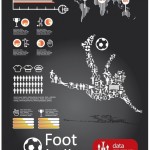by Lewis Howes– The Sports Networker

“There are over 380,000 student athletes, and most of us go pro in something other than sports.” This tagline was created by the NCAA nearly two years and it emphasizes how difficult it is in getting paid to play sports. Finding a job in the sports industry may not be as difficult as becoming a professional athlete, but it is still competitive.
There are some simple ways to improve your chances to finding any job you desire. Whether you are a student looking for a college internship, you are a recent graduate starting out, or you are a seasoned professional changing jobs, these simple steps will enhance your odds at becoming a pro, in sports.
1. Research Your Audience– If you are attending a career fair, a networking event, or an interview, get to know the people and companies you will meet before you meet them. Who are you speaking to? What is their current and past work experience? What type of candidates do they look for? Find any information through current connections, or by researching company websites or social networking sites to give you helpful information.
2. Dress the Part– Take pride in the way you look. There is no need to try and go over the top, but first impressions are everything and you want to make sure you are dressed to impress. Look like you are a champion and you will set yourself up for success.
3. Listen– An important aspect of successful networking is showing others you have a genuine interest in who they are and what they do. If you talk about yourself the entire time without letting others speak, you will come across as self-centered. Listen to what other say, then talk about what they said the next time you meet and they will appreciate that you listened and remembered.
4. 10 Second Rule– Traditional networking suggests we have 30 seconds to leave a lasting impression during any introduction. I like to think we only have 10 seconds when competing for a job in the sports industry. Try to state four things in these first 10 seconds: 1. your name, 2. your school/company, 3. your unique talent/skill set, and 4. what goal/job you want to have. Be crisp and to the point to show others you know exactly what you want.
5. Ask Compelling Questions– What do you do? Where did you go to school? Where are you from? These are the same boring questions that we all hear. Instead of blending in with the crowd, stand out by asking a compelling question to a potential contact or employer: What led you to become so passionate in this industry? What has been your most difficult challenge to overcome, and how did you overcome it? What is the defining moment that brought you to this point in your career?
6. Stay in Touch– Make it easy for people to contact you:
- Update your current information on your business card.
- Leave a signature at the end of every email with the best number to reach you.
- When you leave a voice message for someone, first state your name and your phone number, followed by when and where you met.
7. Follow Through– For an athlete, it is hard to complete a pass, throw a strike, shoot a 3-pointer, or hit a hole-in-one without the follow through. This is also true in networking. Once you make a connection or find an interesting lead, always follow through with an e-mail, a phone call, or both. This will keep you on the fore front of their minds if an opportunity arises.
Did I miss any important networking principles? Feel free to post your thoughts in the comment section below. Subscribe to the RSS feed to receive updates from this blog and add your your e-mail to receive the monthly SportsNetworker Newsletter.




This is great advice Lewis. I don't think you missed much of anything. Although I would go farther on the dress the part section to say a suit is almost always necessary.
Best of luck,
Kylara Kazakoff
Great article. All of this information is valuable. I would add that along with researching the audience, it is important to attend targeted events, seminars, etc. A concentrated effort to surround yourself with people who are where you want to be is just as important as researching the audience.